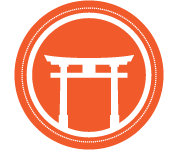Relax Completely: Aikido Alignment
Inryoku Volume 4 Issue 10
By Josh Paul Sensei, AOSB Head Instructor
Complete relaxation is one of aikido’s four basic principles. Teachers frequently tell students, and students frequently tell themselves, to relax. But what does that mean and how is relaxation achieved? Isn’t pursuing relaxation–making it a goal, something to do and to achieve–anathema to relaxation in the first place? Is it physical? Mental? Should we try to suppress or ignore physical or mental stressors? Reading this, are you starting to stress about relaxing?
“Aikido’s 4 Basic Principles
—Keep one point
—Keep weight underside
—Relax completely
—Extend ki”
The relaxation we seek in aikido is not any one thing. For now, we’ll imagine it as a letting go–as a release of the muscles and muscle groups that are overly engaged or unnecessarily engaged.
Do a quick scan of your body. Are you sitting in a chair with shoulders scrunched up to your ears? Could your feet be flat on the floor but your heels are raised for no reason? Are you slouching on the couch but flexing your quadriceps? If you sit crossed-legged on the floor and raise your arms overhead, do your knees rise as well? Are your hamstrings and/or quadriceps tight? Are you sitting up straight?
All of these things and more can pull the body out of alignment. And misalignment may trigger our fight or flight responses (at least according to yoga teachers and chiropractors.) During the fight or flight response, the sympathetic nervous system catalyzes the release of multiple hormones such as catecholamines, including adrenaline, noradrenaline, and cortisol. The process enables the body to fight a threat or flee from it. It is a state that is the opposite to relaxation.
Slouching, tight hamstrings, or bouncing knees won’t induce a full fight or flight response. That would include dilated pupils, increased respiration, and trembling. However, even a small amount of these hormones (call it a subclinical amount) circulating through the body may make “complete” relaxation impossible.
Finding misalignments is an introspective process—a type of meditation. It asks that we become aware of the body’s voluntary and involuntary actions, habitual movements, and tightnesses and flexibilities. It is a process that requires curiosity and the ability to suspend judgement. We all possess a tendency to find a tight muscle that we attribute to inactivity or a sore joint that we attribute to age. But these are not things to judge and value. They are an opportunity—something to explore, probe, question, and redirect.
Relax Completely: Alignment Workshop
Sunday, October 9
10:00 am - 1:00 pm
This special 3-hour workshop will focus on body alignment, relaxation, and aikido technique. The workshop will also address building constructive relationships with training partners and cultivating curiosity.
Josh Paul Sensei will lead the intensive. Paul Sensei is the head instructor of AOSB and a member of the Aikido World Alliance Technical Committee. He is ranked godan Aikikai and is also a 200-hour certified yoga instructor.
Please bring a comfortable T-shirt in addition to your uniform.


